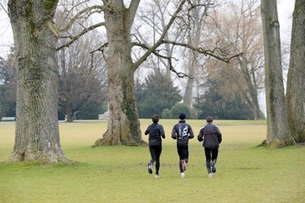Depression is the most frequently diagnosed mental illness; at least every tenth person suffers from depression once in the course of their life. Depression influences physical health more than diabetes or arthritis. Treatment of depression traditionally occurs with medicines (antidepressants) and psychotherapy. But as a publication has shown, sport and physical activity partially encounter the same neurophysiological changes as antidepressants. That is why a large number of meta-analyses showed a positive effect of sport and physical activity on depression.
Neurobiological adaptations through sport and physical activity
Sport and physical activity bring about various changes in the brain which are otherwise achieved only through drugs. Similar to sport and physical activity, drugs for treatment of depressions act on the brain’s capacity to absorb serotonin. They strengthen the epinephrine activity and ensure the release of various factors for nerve growth. These factors promote cell growth in the brain and prevent the death of cells in the hippocampus which is otherwise caused by depression. Together with these changes, sport and physical activity also lead to a reduced activity of the stress hormone cortisol and therefore have an effect similar to psychotropic drugs.
“Unfortunately, the meta-analyses do not allow any conclusions as to how often and how long weekly sport should be pursued,” says Mirko Wegner. “But one can see that sport and physical activity alleviate depression. For instance, we were also able to determine that the effectiveness of sport is greater with depressive disorders than with anxiety disorders.”
According to the status of research so far, regularly engaging in sports activities seems to be an effective remedy for reducing symptoms of depression. It is also cost-effective and has very few side effects. However, it still has to be examined whether and above all to which extent sport and physical activity can be a complement or even an alternative to medication for slight depressions.
Source: Science daily
N.H.Kh

